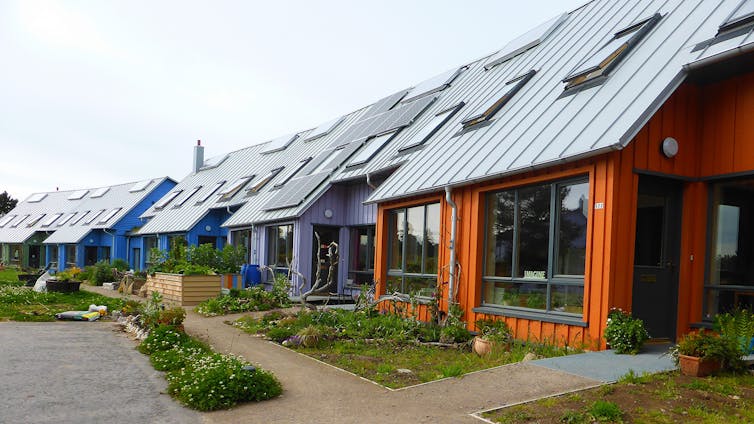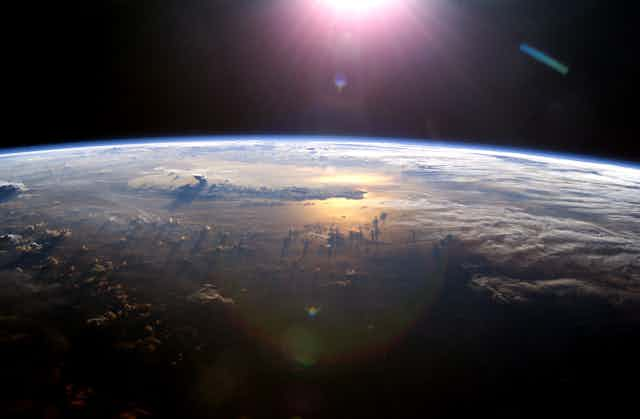We are used to hearing that if everyone lived in the same way as North Americans or Australians, we would need four or five planet Earths to sustain us.
This sort of analysis is known as the “ecological footprint” and shows that even the so-called “green” western European nations, with their more progressive approaches to renewable energy, energy efficiency and public transport, would require more than three planets.
How can we live within the means of our planet? When we delve seriously into this question it becomes clear that almost all environmental literature grossly underestimates what is needed for our civilisation to become sustainable.
Only the brave should read on.
The ‘ecological footprint’ analysis
In order to explore the question of what “one planet living” would look like, let us turn to what is arguably the world’s most prominent metric for environmental accounting – the ecological footprint analysis. This was developed by Mathis Wackernagel and William Rees, then at the University of British Columbia, and is now institutionalised by the scientific body, The Global Footprint Network, of which Wackernagel is president.
This method of environmental accounting attempts to measure the amount of productive land and water a given population has available to it, and then evaluates the demands that population makes upon those ecosystems. A sustainable society is one that operates within the carrying capacity of its dependent ecosystems.
While this form of accounting is not without its critics – it is certainly not an exact science – the worrying thing is that many of its critics actually claim that it underestimates humanity’s environmental impact. Even Wackernagel, the concept’s co-originator, is convinced the numbers are underestimates.
According to the most recent data from the Global Footprint Network, humanity as a whole is currently in ecological overshoot, demanding one and a half planet’s worth of Earth’s biocapacity. As the global population continues its trend toward 11 billion people, and while the growth fetish continues to shape the global economy, the extent of overshoot is only going to increase.
Every year this worsening state of ecological overshoot persists, the biophysical foundations of our existence, and that of other species, are undermined.
The footprint of an ecovillage
As I have noted, the basic contours of environmental degradation are relatively well known. What is far less widely known, however, is that even the world’s most successful and long-lasting ecovillages have yet to attain a “fair share” ecological footprint.
Take the Findhorn Ecovillage in Scotland, for example, probably the most famous ecovillage in the world. An ecovillage can be broadly understood as an “intentional community” that forms with the explicit aim of living more lightly on the planet. Among other things, the Findhorn community has adopted an almost exclusively vegetarian diet, produces renewable energy and makes many of their houses out of mud or reclaimed materials.

An ecological footprint analysis was undertaken of this community. It was discovered that even the committed efforts of this ecovillage still left the Findhorn community consuming resources and emitting waste far in excess of what could be sustained if everyone lived in this way. (Part of the problem is that the community tends to fly as often as the ordinary Westerner, increasing their otherwise small footprint.)
Put otherwise, based on my calculations, if the whole world came to look like one of our most successful ecovillages, we would still need one and a half planet’s worth of Earth’s biocapacity. Dwell on that for a moment.
I do not share this conclusion to provoke despair, although I admit that it conveys the magnitude of our ecological predicament with disarming clarity. Nor do I share this to criticise the noble and necessary efforts of the ecovillage movement, which clearly is doing far more than most to push the frontiers of environmental practice.
Rather, I share this in the hope of shaking the environmental movement, and the broader public, awake. With our eyes open, let us begin by acknowledging that tinkering around the edges of consumer capitalism is utterly inadequate.
In a full world of seven billion people and counting, a “fair share” ecological footprint means reducing our impacts to a small fraction of what they are today. Such fundamental change to our ways of living is incompatible with a growth-oriented civilisation.
Some people may find this this position too “radical” to digest, but I would argue that this position is merely shaped by an honest review of the evidence.
What would ‘one planet’ living look like?
Even after five or six decades of the modern environmental movement, it seems we still do not have an example of how to thrive within the sustainable carrying capacity of the planet.
Nevertheless, just as the basic problems can be sufficiently well understood, the nature of an appropriate response is also sufficiently clear, even if the truth is sometimes confronting.
We must swiftly transition to systems of renewable energy, recognising that the feasibility and affordability of this transition will demand that we consume significantly less energy than we have become accustomed to in the developed nations. Less energy means less producing and consuming.
We must grow our food organically and locally, and eat considerably less (or no) meat. We must ride our bikes more and fly less, mend our clothes, share resources, radically reduce our waste streams and creatively “retrofit the suburbs” to turn our homes and communities into places of sustainable production, not unsustainable consumption. In doing so, we must challenge ourselves to journey beyond the ecovillage movement and explore an even deeper green shade of sustainability.
Among other things, this means living lives of frugality, moderation and material sufficiency. Unpopular though it is to say, we must also have fewer children, or else our species will grow itself into a catastrophe.
But personal action is not enough. We must restructure our societies to support and promote these “simpler” ways of living. Appropriate technology must also assist us on the transition to one planet living. Some argue that technology will allow us to continue living in the same way while also greatly reducing our footprint.
However, the extent of “dematerialisation” required to make our ways of living sustainable is simply too great. As well as improving efficiency, we also need to live more simply in a material sense, and re-imagine the good life beyond consumer culture.
First and foremost, what is needed for one planet living is for the richest nations, including Australia, to initiate a “degrowth” process of planned economic contraction.
I do not claim that this is likely or that I have a detailed blueprint for how it should transpire. I only claim that, based on the ecological footprint analysis, degrowth is the most logical framework for understanding the radical implications of sustainability.
Can the descent from consumerism and growth be prosperous? Can we turn our overlapping crises into opportunities?
These are the defining questions of our time.

